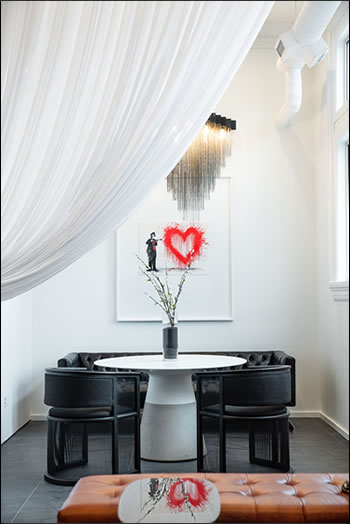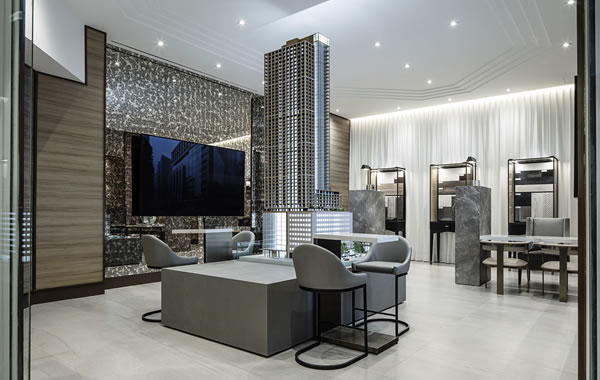By Melandro Quilatan
Tomas Pearce Interior Design
Toronto has solidified itself as an international condominium hub, with potential buyers swooping in from Italy, Spain, Brazil and China. According to the Toronto Real Estate Board’s latest condo market report, year-over-year price growth in the City of Toronto, which accounted for almost 70 per cent of transactions, continues to climb steadily.
But with the sheer amount of new build properties cropping up, potential buyers – including current renters – have grown more discerning. Now more than ever, there is increasing pressure on developers to deliver more than simply good design. As the ultimate differentiator in closing a sale, signature amenities and suite designs now need to be tailored to residents’ lifestyles, hobbies and interests, and they need to address the needs of targeted demographics.
Whether it’s a boutique condo or large-scale development, here’s how developers can exceed buyer’s expectations by taking their project’s design to new heights.
Community context should inform design decisions
Whether it’s a new or heritage build, the period of the building, its architectural details and location will play a pivotal role in how the interior design is conceived. The location will also inform how residents and the community will interact, providing valuable insight about possible buyers.
A developer’s first step in any design process should be to enlist a design firm to look to the community to conduct valuable demographic research. To create a design concept, designers need to know and understand who lives in that community, what type of purchases they make and what kind of activities they enjoy. From there, we can make well-informed design decisions that add value to a development program. As an example, for a project situated within a neighbourhood where young couples are evolving into families, we incorporated unique amenities such as dedicated indoor and outdoor kid’s zones outfitted specifically for children to play in. It’s something buyers not only desire, but need.
Take a development located in the urban oasis of High Park as another example of how community context deeply informed design decisions. Our research unearthed that being immersed in nature for health and wellness purposes is highly important to local residents. Inspired amenities such as a unique bike engagement and bike share program, a double-height rock climbing wall, and outdoor gardening plots for residents to plant their own herbs and flowers were then created for the building. This recent development also saw us incorporating recycled materials from the site itself – woods from local trees – which were then repurposed for artful lobby furnishings and wall paneling.
With urban space at a premium, today’s product is getting more and more compact. So, to hook potential buyers and keep them for the long term, developers need to incorporate thoughtful design elements, such as amenities that support a lifestyle that can extend beyond the doors of condo suites. These design details also build a deeper sense of community within the development.
Make a signature mark by telling a branded story through design
Not only does the branding of a property provide it with a name and identity, branding can and should provide a starting point for interior inspiration. A development’s brand can tell a story, with unique elements being reflected throughout the interior lobby, common spaces, amenities and even suites to give a property a signature mark of differentiation.
Take a planned development located at the heart of a number of coveted Toronto neighbourhoods for example. Branded based on the insight that the development marked the crossroads or ‘x’ of a number of different neighbourhoods, combined with the deep passion and love felt by local residents for the area, the developer hoped to capture that the building is more than just a place, but rather, a feeling.

This particular insight was the inspiration for placemaking and provided a starting point for the sales centre’s design, allowing our design team to tell an emotive story by incorporating heritage elements such as local street art, a branded love-inspired lighting fixture, and urban subway tiles within the showroom kitchen’s backsplash. Walking into the sales centre, these branding elements create unique moments and vignettes, which will also eventually serve as memorable design details in final amenity and suite spaces. It’s design moments like these that can create an emotional relationship with potential buyers, helping to make the property stand out. That’s why it’s vital that design convey the brand vision, and therefore, when engaging a design firm, branding should be an essential part of a developer’s interior design considerations.
Creating a suite design that stands out, and stands the test of time
While signature amenities are always in demand, we can’t forget the design of beautiful and efficiently planned suites. An experienced interior design team will carefully consider how the target demographic will experience a building’s suite spaces. By working alongside developer’s sales and marketing teams, interior designers can efficiently space-plan, helping to maximize the existing or proposed building footprint, and substantially increasing the commercial value of a project.
Understanding end users and creating a matrix of the suites to match – whether it’s a combination of bachelor studios, one- and two-bedrooms for young Millennials and downsizers, through to established families who require two-plus bedrooms, interior designers can help developers create a suite plan tailored for every lifestyle.
When it comes to suite design, longevity is also important to consider and materiality matters. Incorporating a range of standard finishes in a cohesive colour palette ensures that varying tastes are taken into consideration. Leveraging neutrals enables more potential owners to envision themselves in a space. Once purchased, residents can then layer on their own colour preferences through artwork, florals and accessories. Most importantly, a suite design shouldn’t be overly trendy, as fashions come and go. But colouration and textures should be unique to the development. Mixing in metals, mirrors and custom lighting layouts can also add greater perceived luxury with relatively inexpensive investments levels.
Designing a lasting legacy
Finally, while developments are primarily focused on delivering commercial value, it’s equally important to consider that interior designers and developers are ultimately working together to create someone’s future home. Thoughtful design must be at the core of any development, and if done well, a development can enhance the community, improve the quality of residents’ lives, and create a lasting legacy within the city.
 |
Melandro Quilatan is President & Co-Founder of Tomas Pearce Interior Design. |












